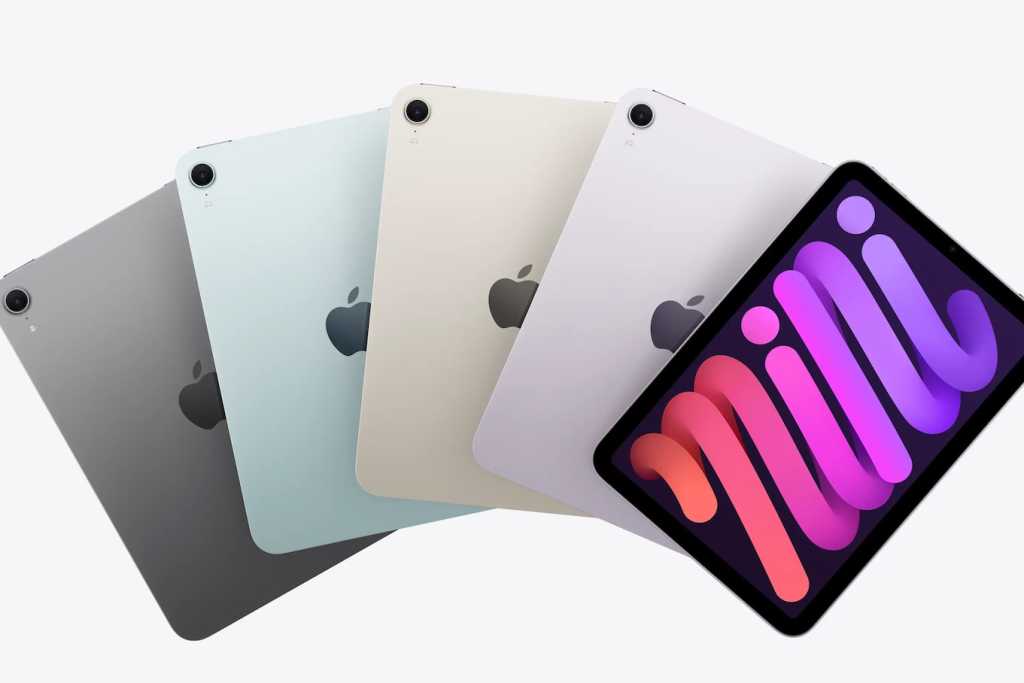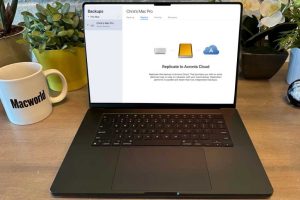
We marked October 22 on the calendar and canceled our appointments. We were almost certain that Apple would hold its second fall keynote on that day and unveil new Macs and iPads. But then, just when we were expecting an invitation, Cupertino sent us instead a press release with details of the 7th-gen iPad mini… and nothing else.
To be clear, I think it’s good news that we’re finally getting a new 8-inch tablet three years after the last update. And Apple was clear about the key innovation in its announcement: the iPad mini 7 is made for Apple Intelligence, which is why it gets the A17 Pro processor from last year’s iPhone 15 Pro. (Admittedly, in view of the fact that we still have to wait a while for Apple Intelligence in the EU and probably even longer for Apple’s generative AI to work in German, this doesn’t knock my own personal socks off. But I welcome it for my U.S. pals.)
Not much else has changed. Even the front-facing camera remains in portrait format, although this is less of a clear-cut design error on the mini than on larger iPads because it’s used more as a selfie camera. The colors are also slightly different, with pastel shades somewhere between the trendy iPad 10 and the serious iPad Pro. But color is rarely a reason to buy.
Where does this leave the iPad?
The new iPad mini will certainly find a market, just like its predecessors. The line has had unexpected wins in certain professions: it’s popular in aviation, for instance, saving flight crew from having to carry heavy manuals in the cockpit. In medicine, the compact tablet fits perfectly into the pocket of a lab coat and provides doctors with all the information they need during their rounds. Thanks to the iPad mini it’s no longer necessary to print out X-rays.
For that matter, anyone who sets the text on their Kindle to the largest size should consider the iPad mini for reading books. Graphic novels in particular benefit enormously from the mini’s razor-sharp, high-contrast screen. The new iPad mini is also highly recommended as a notepad and drawing board for those in school, university, or professional training.
But the first serious question raised by the 7th-gen iPad mini is particularly relevant to the latter target group. Where does this leave the standard iPad?
Apple hasn’t updated the vanilla iPad since 2022, but it was a memorable (if divisive) launch. The Lightning connector gave way to a USB-C port, the home button disappeared in favor of a larger screen, and Touch ID was embedded in the on/off switch, following the example of the iPad Air and iPad mini. More surprisingly, Apple took the opportunity to experiment with a new camera position on the long edge. This was apparently well received by customers, despite the arrival of an annoying new adapter for the 1st-gen Apple Pencil. But last year, there was no new iPad at all, which is unusual for a device that Apple has updated every year since its comeback in 2017.
So what stopped Apple from launching the 11th-gen iPad this month, alongside the new iPad mini? Of course: it’s the Apple Intelligence issue.
The chip in the 10th-gen iPad was a generation older than the one in the contemporary iPad mini, even though the iPad itself was a year younger. That makes sense, given the price gap. But if Apple were to maintain that system, and launch an iPad 11 with a chip that’s a generation older than the A17 Pro in the new mini–presumably an A16–then where does that leave Apple Intelligence? It wouldn’t be supported. Apple Intelligence requires 8GB of RAM, which means it needs an A17 Pro or higher or an M-class chip.
That leaves Apple with only three options for the 11th-gen iPad, none of which are attractive. Install an A16 and manage without Apple Intelligence? Surely not—Apple wants training data for its new AI platform, and that means getting as many users as possible. Use the M1 instead? Could be confusing for customers, but feasible. Wait another year to launch the 11th-gen iPad? Perhaps this is the best option, because so many of the iPad’s target markets, in schools and the public sector, simply don’t need a new model every year.
What about the Mac?
There’s a second important question raised by the 7th-gen iPad mini. Where does this leave the Mac? Especially the MacBook Pro M4, and the Mac mini M4 (Pro). When will they get announced?
We had been expecting a detailed October keynote with news about the Mac and iPad. With the tablet seemingly covered by the new iPad mini announcement, will Apple go ahead with a Mac-only show? And if it does, surely there would have been time to mention the new iPad at the end of the event? The press release throws everything into doubt.
What we do know is that a Mac event is certainly needed: the Mac mini M4 (Pro) is almost as overdue as the iPad mini 7 was, and the MacBook Pro M4 has already turned up on the Russian gray market. But with time ticking on the previously expected date, we may need to push back our expectations to October 28.
Then again, maybe Apple will present the new machines on Halloween, just like last year. We’re putting it on our calendars. And we’d better cancel our appointments, just to be sure.
This article originally appeared on our sister publication Macwelt and was translated and localized from German.




